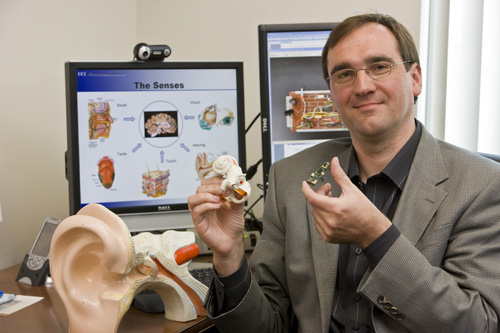A successful Vestibular Prosthesis is seen as a promising MEMS-based implant to restore the lost sense of balance caused from damage in the vestibular system of the inner ear. While a normal vestibular system provides good perception of body posture and motion to generate control signals for extraocular muscles, any dysfunction in sensing and coding the linear translation and rotation by this sensory organ poses dizziness and blurred vision followed by serious health risk, especially for the elderly.
Mimicking the sensor role of semicircular canals and otolith organs, a folded IMU is to detect acceleration and rotation along three independent axes. Selective electrical excitation of the vestibular nerve by the output signals from a multi-directional micro-sensor is a challenging part of compensating balance and motion sense in human function. While the excitation frequency is tuned based on the firing rate in hairy cells of the Crista, Utricle and Saccule, a multi-channel signal processor introduces current pulses into a folded array of electrodes wrapping around the superior and inferior vestibular nerve. Special fabrication techniques are needed to produce a dense array of sharp electrodes with high aspect ratio for ionic stimulation of nerve bundles. A robust electrode configuration, without additional exciting of the cochlea and facial nerve adjacent to the working area, is desired to stimulate various neurons in the vestibular nerve section.
Many challenges exist to miniaturize, fabricate and implement such a device, but overcoming these challenges would result in a fully implantable, long-term vestibular prosthesis, capable of sensing, processing and stimulating nerves to allow the human body to sense motion.
